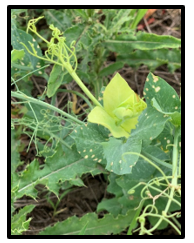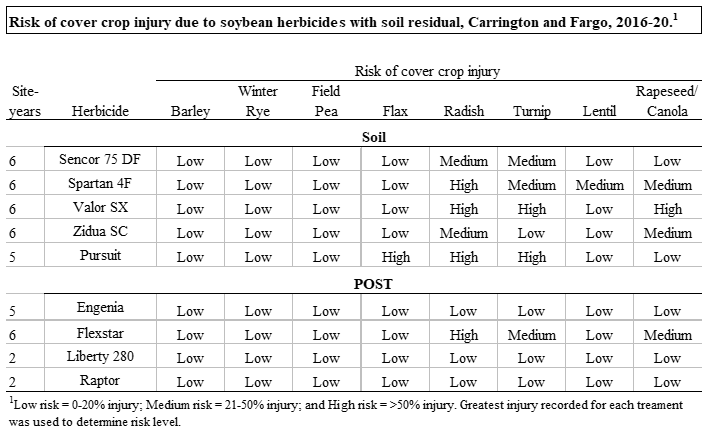Numerous considerations are needed to plan and utilize cover crops as part of farm management. Besides setting goals for cover crop use, field history of herbicides needs to be considered to avoid loss of cover crop stands due to herbicide residuals in the soil.
Previous research coordinated by the Carrington Research Extension Center resulted in a table that displayed various risk levels with planting cover crops on ground previously treated with wheat herbicides that have soil residues. A similar study followed, to build a database indicating cover crop tolerance to soybean herbicides with potential soil residuals.
Field pea injury from soybean herbicides.
In 2016, an initial trial was conducted in Fargo to determine the tolerance of common cover crops to selected corn and soybean herbicides. The soybean data from the trial were considered as a formal study was conducted at Carrington and Fargo during 2018 to 2020. The study included nine soybean herbicides and eight cover crops.
Soil and post-emergence herbicides were applied at labeled rates and timings to soybean. The crop was mowed during August (seed-fill stages) and cover crops direct planted into the soybean stubble generally late August to early September. Visual evaluation of injury (biomass and/or stand reduction) began generally in late September (3-4 months after application of herbicides).
The study resulted in a six site-year database that was summarized in the following table. The table will be published in the NDSU 2021 ND Weed Control Guide.
All herbicides, except Liberty 280, injured cover crops. Barley, winter rye and field pea had the greatest tolerance to herbicides. Radish, turnip and rapeseed/canola generally had the least tolerance to herbicides. The following herbicides potentially have high risk of injury for specific cover crops. Spartan = radish; Valor = radish, turnip and rapeseed/canola; Pursuit = flax, radish and turnip; and Flexstar = radish.
Partial funding for this project was provided by the North Dakota Soybean Council.
NDSU does not endorse commercial products or companies even though reference may be made to tradenames, trademarks or service names.


